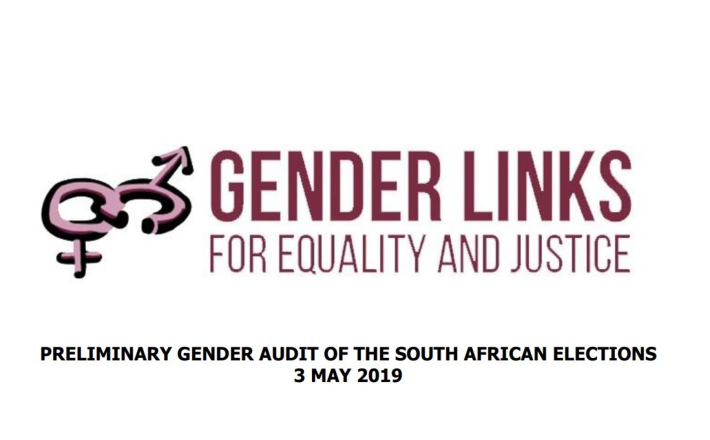South Africa: Gender and elections pre-audit
Source: Gender Links
May 3: A preliminary gender audit of the South African elections due to be held on 8 May shows that while there will be a slight increase in women’s representation, women are still missing from the top echelons of political parties and from the media.
“On World Press Freedom Day it is an indictment on South Africa that women still constitute just one fifth of those whose views and voices are heard,” said GL CEO Colleen Lowe Morna at the launch of Gender Links report.
At 55% women will constitute the majority of voters in the 2019 South African elections. Gender Links predicts using available data that the proportion of women in the House of Assembly will increase from 40% in 2014 to 44% in 2019.
But, without a legislated quota, and with vacillating commitment by political parties to gender parity, South Africa will again miss the 50% mark. Apart from Agang, the political party formed by anti-apartheid activist Mamphela Ramphele that is expected to garner less than 1% of the vote, none of the political parties contesting has achieved gender parity in its top five.
“Male leaders either oppose quotas; fail to implement them; or backslide into misogynistic slurs despite the lofty language in their political manifestos,” noted GL advisor Kubi Rama who authored the report.
A further measure of women’s lack of #Voiceandchoice in our society is the fact that women sources in news coverage persists at 22% or about one fifth of those whose views and voices are heard in the elections. Despite being one of the most pressing social justice issues of our time, gender equality represents less than one percent of media coverage, according to Media Monitoring Africa.
“The message as South African go to the polls next week are clear,” says Rama. “Political parties need to engage with the fact the women constitute 55% of the electorate and address their concerns in manifestos, party lists and in leadership. The media must do better. Women sources are available but barely accessed.”
Click here to see the report.

May 3: A preliminary gender audit of the South African elections due to be held on 8 May shows that while there will be a slight increase in women’s representation, women are still missing from the top echelons of political parties and from the media.
“On World Press Freedom Day it is an indictment on South Africa that women still constitute just one fifth of those whose views and voices are heard,” said GL CEO Colleen Lowe Morna at the launch of Gender Links report.
At 55% women will constitute the majority of voters in the 2019 South African elections. Gender Links predicts using available data that the proportion of women in the House of Assembly will increase from 40% in 2014 to 44% in 2019.
But, without a legislated quota, and with vacillating commitment by political parties to gender parity, South Africa will again miss the 50% mark. Apart from Agang, the political party formed by anti-apartheid activist Mamphela Ramphele that is expected to garner less than 1% of the vote, none of the political parties contesting has achieved gender parity in its top five.
“Male leaders either oppose quotas; fail to implement them; or backslide into misogynistic slurs despite the lofty language in their political manifestos,” noted GL advisor Kubi Rama who authored the report.
A further measure of women’s lack of #Voiceandchoice in our society is the fact that women sources in news coverage persists at 22% or about one fifth of those whose views and voices are heard in the elections. Despite being one of the most pressing social justice issues of our time, gender equality represents less than one percent of media coverage, according to Media Monitoring Africa.
“The message as South African go to the polls next week are clear,” says Rama. “Political parties need to engage with the fact the women constitute 55% of the electorate and address their concerns in manifestos, party lists and in leadership. The media must do better. Women sources are available but barely accessed.”
Click here to see the report.